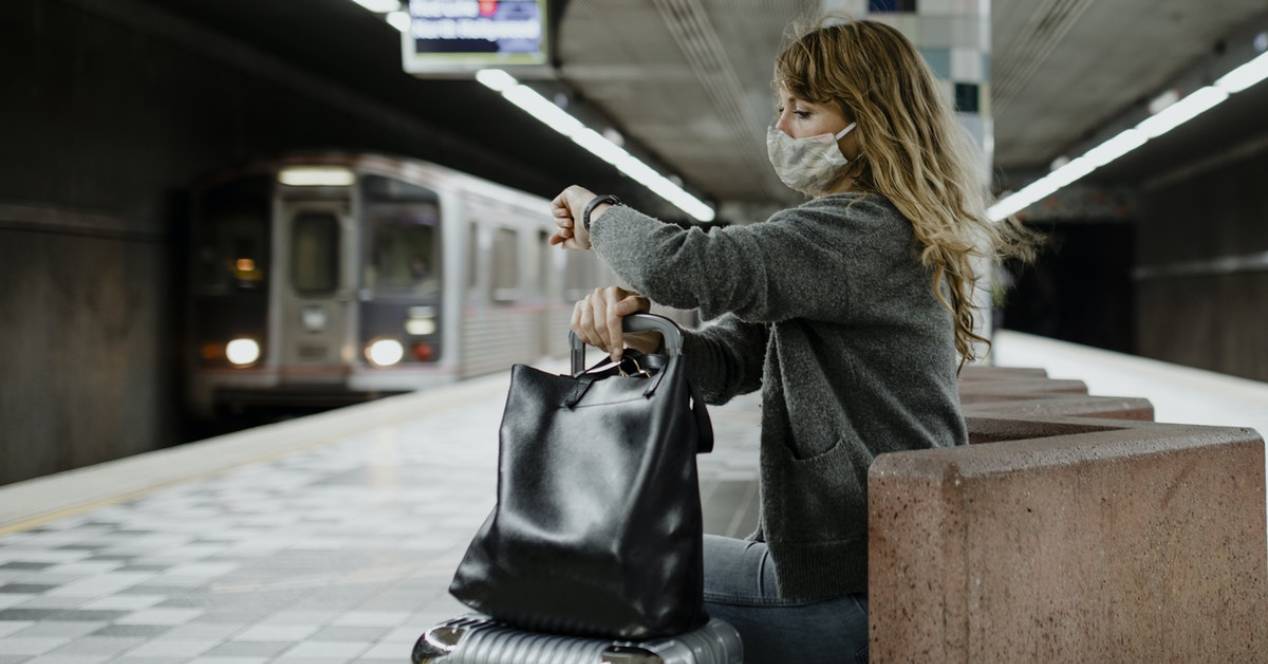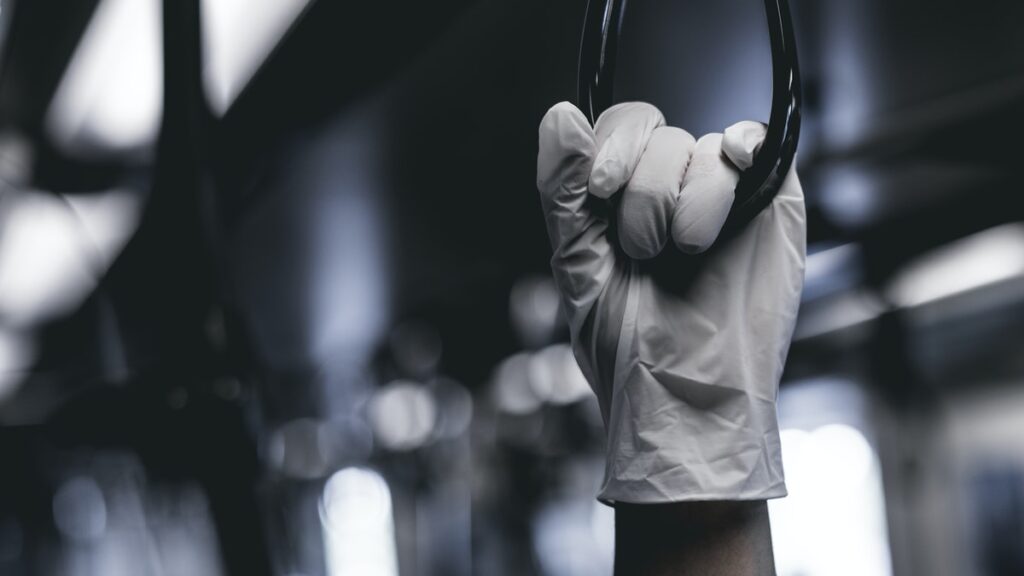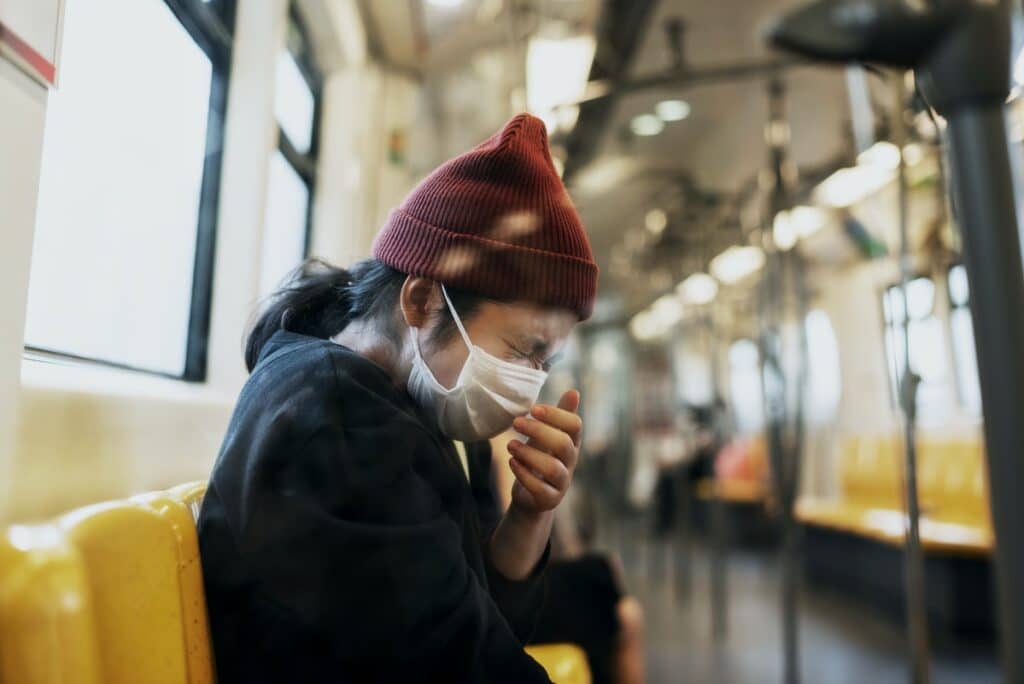
Although many Spaniards are still under stay-at-home orders to contain the spread of the novel coronavirus, some states have begun taking steps to reopen businesses. And, as millions of people return to the workplace, many will no doubt rely on public transportation.
If you are one of these, you probably have questions about how to avoid getting germs on your route.
Whether you need to catch public transportation soon or just want to be prepared for the future, we've got you covered.
11 tricks to avoid contagion on the subway and bus
Pay before you travel
If you must travel by train or bus, use transport that has a contactless payment. Using contactless payment, such as tap-and-play cards or advance payment methods via smartphone apps, you can purchase your ride quickly and avoid contact with station agents and drivers to potentially reduce transmission of the virus.
In fact, some public transportation authorities have begun to institute these best practices to encourage social distancing and mitigate the spread of COVID-19.
Keep the social distance
Although it can be challenging on board a bus or train, do your best to practice social distancing to the fullest extent. And not only during the trip, but especially while waiting at bus stops, or getting in and out of the vehicle.
These doors are choke points, meaning they can easily become crowded, congested, or blocked with a bunch of travelers in a hurry. The last thing you want is to be side by side with someone who might be infected.
That is why it is essential to maintain at least 2 meters distance at all times. In fact, a May 2020 study published in Health Affairs found that places without social distancing exhibited a 35 times higher risk of spreading the coronavirus.
Use the back exit
A simple way to safely social distance is to avoid interactions with bus drivers when exiting or entering the vehicle through the rear doors. Drivers, who are around passengers all day, remain the people most likely to get infected.
So ideally you should get in and out the back unless you are a passenger with special needs or disabilities.
And, to prevent transit operators from getting sick, many transit agencies have begun handing out supplies like masks, gloves, hand sanitizers, and disinfecting wipes to keep their employees safe.
But minimizing your contact with drivers is still key to your health and theirs.
Keep in mind that the more transit workers become infected, the fewer will be available to operate public transportation. This means fewer buses and trains to carry the same number of passengers.
wear a mask
Whenever you are on public transport, wear a mask and avoid touching your eyes, nose and mouth. Wearing glasses is also recommended to reduce the urge to put your hands in your eyes. By doing so, you help reduce the risk of the virus reaching you through droplets and aerosols.
That is exactly why some public transport authorities require passengers to wear face coverings when traveling.
Still, wearing a mask is not a substitute for social distancing. Rather, it offers another layer of protection and helps you avoid inadvertently spreading the virus to other travelers, especially if you are pre-symptomatic or asymptomatic.

Stay still
With the exception of going to a new seat to avoid someone who is clearly sick or not wearing a mask, you should ideally try to stay in one place during your trip to minimize the contact you have with people.
This goes back to the idea of social distancing. The fewer encounters you have with potentially sick people, the better.
And it goes both ways. If you are a carrier of COVID-19 and don't know it, you don't want the virus to accidentally spread all over the subway or train. In fact, an April 2020 study published in Nature Medicine estimated that 44 percent of infections occur due to pre-symptomatic people, meaning those who have not yet shown symptoms.
Use a hand sanitizer
Using an alcohol-based hand sanitizer after riding a train or bus seems like a no-brainer. But did you know that you should also put some sanitizer on your hands as soon as you get on the subway or bus? In this way, you reduce the risk of contaminating both surfaces and infecting yourself.
Remember, we all need to take responsibility for staying safe and stopping the spread of this deadly virus within our communities. That means doing what is necessary to prevent others from catching your germs.
This is especially essential if you are infected with COVID-19 but are not showing any signs. In fact, it can take anywhere from five days to two weeks for symptoms to develop, according to a May 2020 study in the Annals of Internal Medicine.
Meanwhile, as the virus incubates, you can inadvertently transmit your pathogens to others on public transportation. Even asymptomatic people who never exhibit indicators of disease can transmit the coronavirus.
Fine, but what should you do if you don't have hand sanitizer? Try to touch as few things as possible during your trip, wear disposable gloves if you have them, and wash your hands with soap and water for 20 seconds as soon as possible.
Do not touch anything
Whether you have hand sanitizer or not, in general, avoiding surfaces on the subway or train is a safe strategy. This is because the new coronavirus can last on various surfaces from a few hours to several days.
If possible, don't touch anything, including the seat itself. You can hold on to the posts or railings with disinfectant wipes. With that said, many transit agencies are also doing their part to reduce the transmission of COVID-19 by disinfecting their vehicles daily.
Choose the off-peak hours
If you have leeway in your schedule, try to avoid taking public transportation during rush hour. By adjusting your travel times, you can avoid times when trains and buses are busiest.
And whenever possible, stay away from the subway and bus routes that run through current coronavirus hot spots. It might be worth walking a bit further to another station if it's situated in a part of the city with lower infection rates or tends to be less congested.
Many public transport authorities are also making strategic changes to keep passengers safer during peak hours. That being said, never get into a crowded vehicle and always give yourself extra time in case you need to wait for a less crowded train or bus.
avoid conversations
While it's always important to be considerate and courteous to your fellow travelers, your daily commute shouldn't be the time for small talk. Don't let a stranger (or anyone really) get you into a conversation.
This is because COVID-19 can be transmitted through respiratory droplets not just when a sick person coughs or sneezes, but simply when they talk. And, since infected people may not show symptoms, it's hard to know who carried the coronavirus in the first place.
In fact, tiny respiratory droplets produced by regular speech can linger in the air for at least eight minutes, according to a May 2020 study published in PNAS. These findings seem to show that speaking normally can easily transmit the coronavirus, especially in confined environments with little air circulation like trains and buses.

Avoid eating inside the subway
On a busy day, you can use your travel time to grab a snack. But in the age of the novel coronavirus pandemic, eating on the go is not a smart idea.
For one thing, you have to remove your mask to have a quick bite. Again, a face covering not only helps protect you from pesky pathogens, but it also prevents your germs from flying freely in the air and infecting other passengers.
Also, chances are, no matter how diligent you are about keeping your hands to yourself, you've probably touched a dirty surface at some point during your trip.
Although there is no evidence that you can contract the coronavirus from contaminated food, it is still not recommended to put your hands near your mouth in public. That's because, without a mask, you're also likely to be touching your face, and if you have germs on your gloves, they can reach other entry points for infection, like your nose and eyes.
The same rule applies to drinks too. Leave your water bottle in your bag; otherwise, the germs you picked up on public transportation can catch on and infect you later.
Use another mode of transportation
If you have another way to travel, use it. I think it's a good idea to avoid public transport if possible and allow people who have no other option to travel more safely.
The thing is, the virus is still present in our communities, so taking public transportation, where you will meet many people, puts you and others at risk of contracting COVID-19.
Infection prevention is a shared responsibility. In other words, we all need to do our part to keep ourselves safe and protect others. That means if traveling by train or bus isn't absolutely essential, don't do it.
Whenever possible, walk or bike to work. Not only will you reduce your risk of contracting or spreading the coronavirus, but you'll also log a few hours of heart-healthy exercise and possibly improve your mental health.